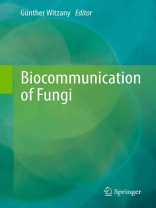Fungi are sessile, highly sensitive organisms that actively compete for environmental resources both above and below the ground. They assess their surroundings, estimate how much energy they need for particular goals, and then realise the optimum variant. They take measures to control certain environmental resources. They perceive themselves and can distinguish between ‘self’ and ‘non-self’. They process and evaluate information and then modify their behaviour accordingly. These highly diverse competences show us that this is possible owing to sign(aling)-mediated communication processes within fungal cells (intraorganismic), between the same, related and different fungal species (interorganismic), and between fungi and non-fungal organisms (transorganismic). Intraorganismic communication involves sign-mediated interactions within cells (intracellular) and between cells (intercellular). This is crucial in coordinating growth and development, shape and dynamics. Such communication mustfunction both on the local level and between widely separated mycelium parts. This allows fungi to coordinate appropriate response behaviors in a differentiated manner to their current developmental status and physiological influences.
表中的内容
Preface.- Introduction: Keylevels of Biocommunication in Fungi.- 1. Intraorganismic Communication.- 1. G protein Signaling Components in Filamentous Fungal Genomes.- 2. The Glycogen Metabolism Regulation in Neurospora.- 3. Epigenetic Regulation of Secondary Metabolite Biosynthetic Genes in Fungi.- 4. Genes from Double-Stranded RNA Viruses in the Nuclear Genomes of Fungi.- 5. Signal Transduction Pathways Regulating Switching, Mating and Biofilm Formation in Candida albicans and Related Species.- 6. Cell-to-cell Communication in the Tip Growth of Mycelial Fungi.- 7. Programmed Cell Death and Heterokaryon Incompatibility in Filamentous Fungi.- 2. Interorganismic Communication.- 8. Communication and differentiation in the development of yeast colonies.- 9. Hyphal Interference: self versus non-self fungal recognition and hyphal death.- 10. Sexual Pheromones in the Fungi.- 11. Thoughts on Quorum Sensing and Fungal Dimorphism.- 3. Transorganismic Communication.- 12. Metabolite-Mediated Interactions between Bacteria and Fungi.- 13. Viruses, Fungi and Plants: Cross-kingdom Communication and Mutualism.- 14. Communication between plant, ectomycorrhizal fungi and helper bacteria.- 15. Lipid-mediated Signaling between Fungi and Plants.- 16. Fungus development and reactive oxygen. hytopathological aspects.- 17. Oxidative stress and oxylipins in plant-fungus interaction.- 18. Oxylipins in Fungal-Mammalian Interactions.- 19. Chemical Signals that Mediate Insect-Fungal Interactions.- Index.












